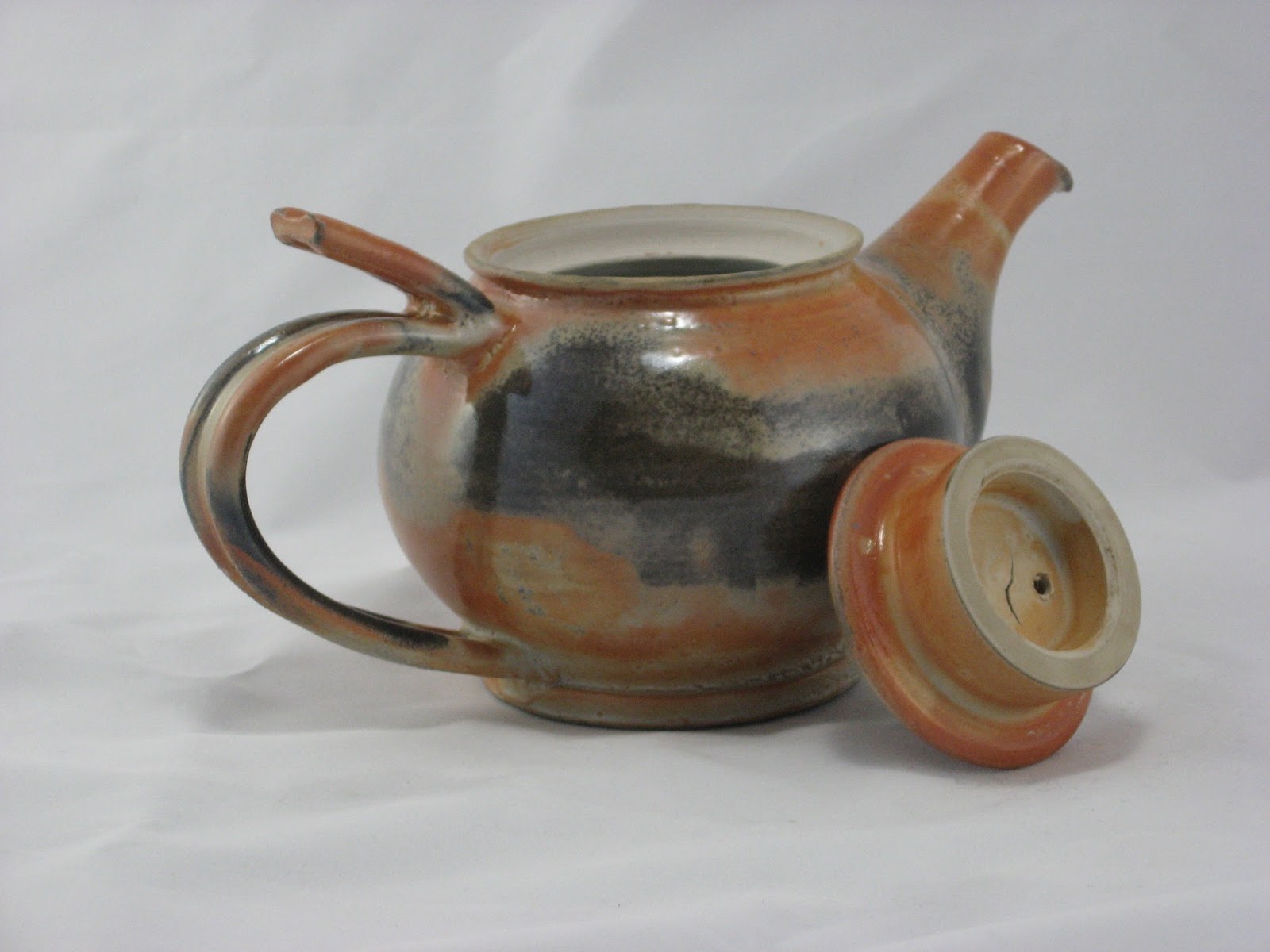Shino… Hard to control, lovely to hold
I was exposed to Shino
glazes in January, 2002 at the Fitchburg (Massachusetts , USA Japan University of
Minnesota
After attending
the event, my friends and I put into motion plans to purchase a gas kiln so we
could experiment with reduction gas firing and Shino glazes. Shino itself is considered a very finicky and
unpredictable glaze. I would never boast
that I have “conquered” the glaze. That
would be foolish. But over the past ten
years of studying, reading, experimenting and firing, I have a much better understanding
of the glaze.
The glaze I use
is called carbon-trapping Shino. Carbon-trapping
is a technique to trap carbon under the glaze. Carbon is created by starving the kiln of
oxygen thus creating a smoky/sooty environment in the kiln. At the precise time that the glaze melts the
carbon will be trapped and sealed under the glaze. If the kiln is heavily reduced, the finish on
the ware will be black to grey. If the kiln is taken out of reduction too early
(and returned to an oxidation environment) the carbon will be burned off and no
carbon will be trapped. The ware produced if carbon is not trapped could be all
white, or have some flashes of orange, or be all orange.
The “holy grail”
of carbon-trapping is to trap some carbon, but burn off the rest to achieve a
piece that has black, grey, tan, orange and white hues. In one kiln load, one might have pieces that
display all of these colors on a few pieces and just one of these colors on others.
In my kiln, the position of the piece inside
the kiln (bottom, middle, top) will also affect the finished color. Parts of the kiln fire hotter than others and
will affect the finished piece.
The picture below shows a good example of the color variation of Carbon-trapping Shino.
No matter the
finished color, Shino fans know that the piece they may treasure is one-of-a-kind
that is not easily reproduced. Shino
just is not that predictable.
As a side note,
the inside of Shino glazed teapots will not exhibit any carbon- trapping no
matter how heavy the reduction is during the firing.




Comments
Post a Comment